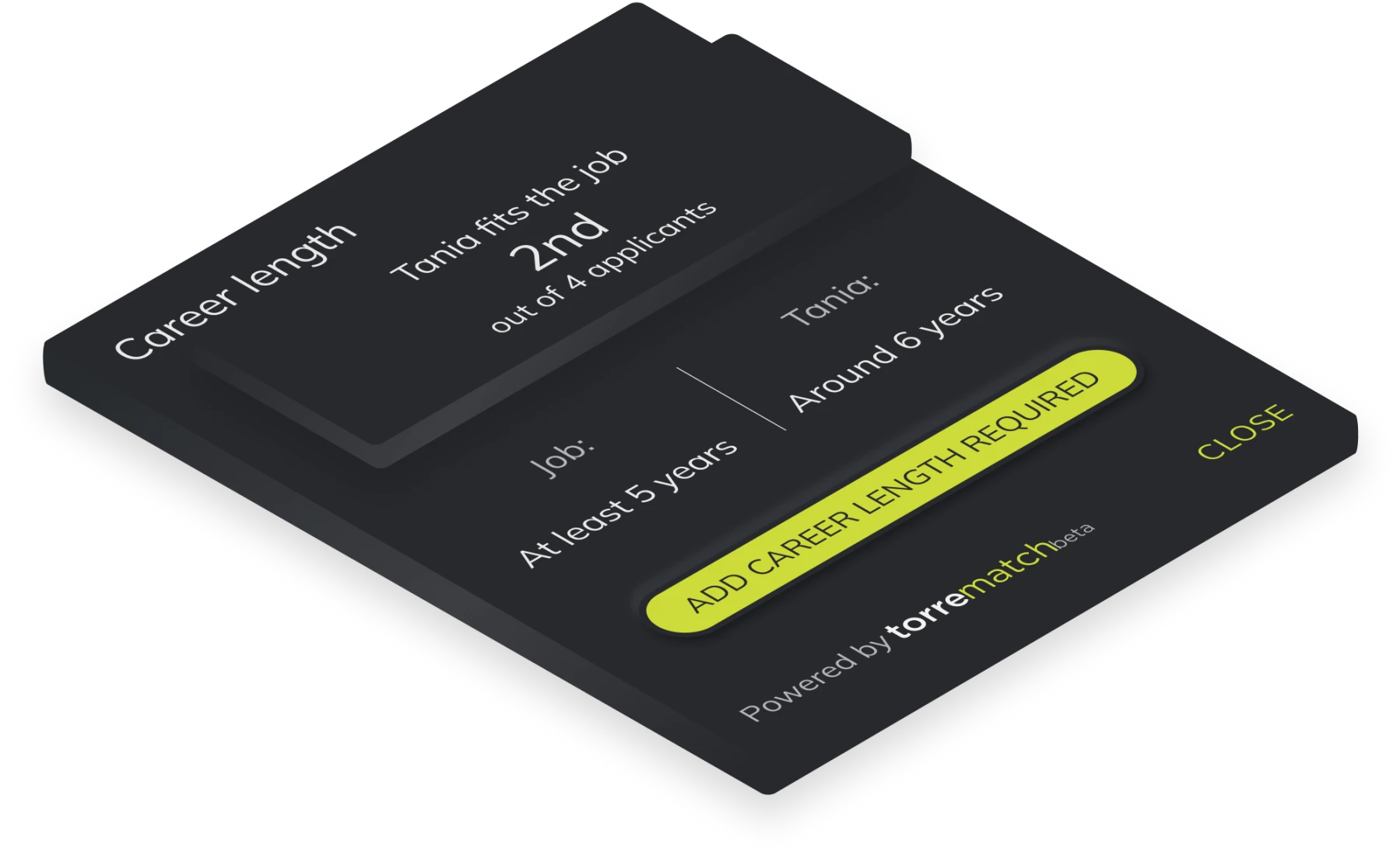
The skill experience ranker algorithm's purpose is to evaluate how many years of total experience the user has with all skills of the opportunity. In this case we don’t only check if the job seeker can do the job like in the skill-proficiency factor, but we compare every user in how much relevant experience they have in each skill.
Candidates provide their experience data during various stages such as onboarding, profile editing, interactions with the recruiter bot, experience updates, and resume imports.
Talent seekers input their experience requirements for job roles during the job post creation or editing phase.
Candidate experiences and associated skills can be verified by other profiles, enhancing their credibility.
Recommendations for skills can add further credibility to the claimed experiences.
5.3.3.3.
Through related experiences
The algorithm checks the duration of the candidate's experience with each skill.
5.3.3.4.
Skill-experience relevance
The relevance of each experience to the associated skill is evaluated.
5.3.4.
Algorithm validation
- Daily and weekly metrics
- Editorial reviews
- Direct feedback from talent seekers
- Direct feedback from candidates
The algorithm assesses each required job skill against the candidate's experience in that skill. The process involves:
5.3.5.1.
Skill similarity
- Skills are standardized and mapped to a normalized version.
- String comparison techniques are used to assess similarity.
- A skill graph or a data science/word2vec model is used to calculate similarity when there is no exact match.
5.3.5.2.
Experience comparison
The algorithm compares the candidate's years of experience in a skill against the job's requirement, with no upper limit on the score.
5.3.6.
Mathematical description
The mathematical formula for this process is as follows:
Let:
The total job matching score is calculated as:

Where:
- Similarity_Score and Experience_Score are calculated as previously described.
Uncertainty in this feature arises when a skill is missing from the candidate’s skill set. The system informs both the candidate and the talent seeker about this missing information, which is then reflected in the scoring.
This experience-based approach differs from proficiency-based algorithms by focusing on the duration of skill usage rather than the depth of skill mastery. It offers an alternative perspective on a candidate's capability, emphasizing the time invested in skill development over the level of expertise achieved.

